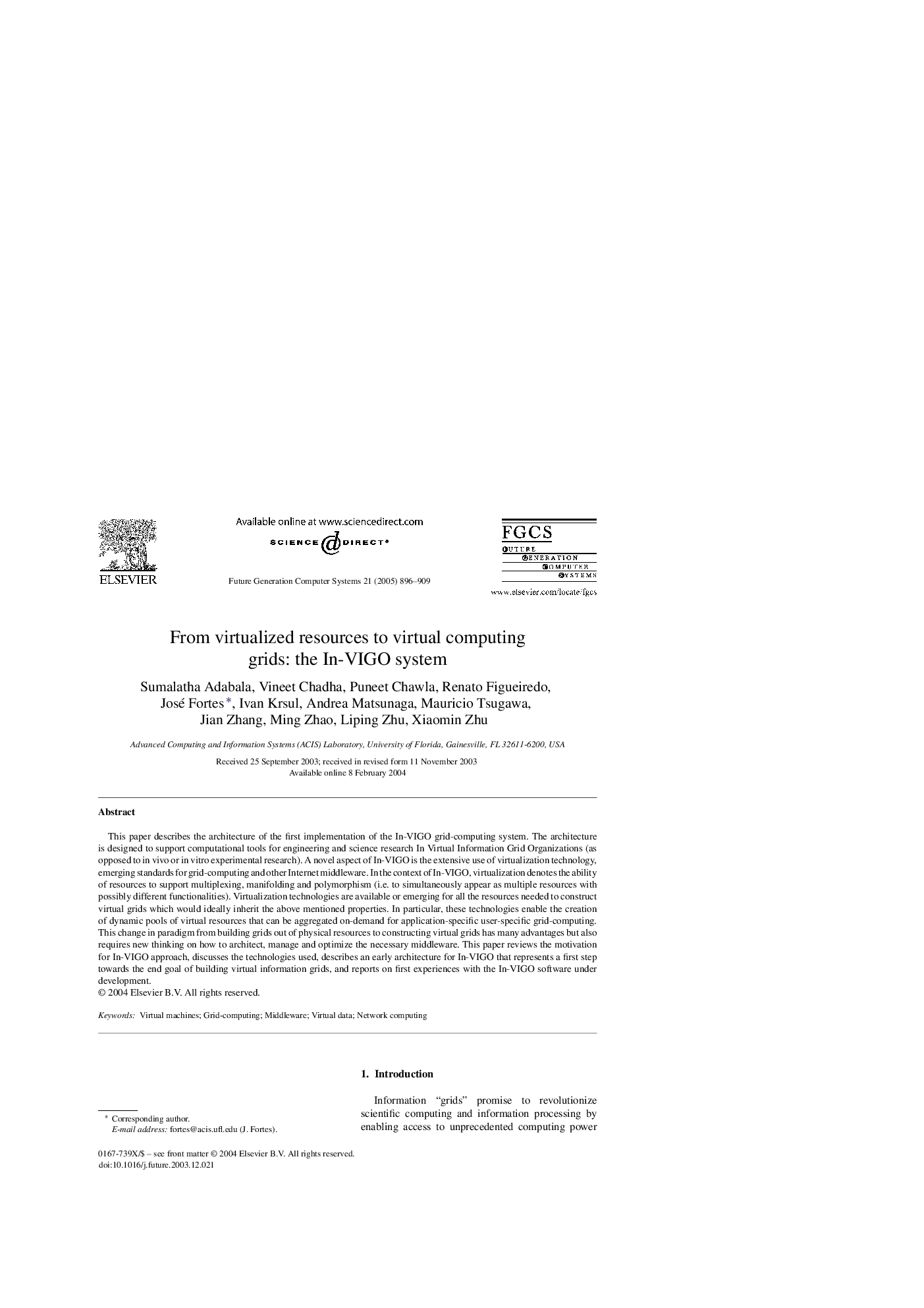| Article ID | Journal | Published Year | Pages | File Type |
|---|---|---|---|---|
| 10330641 | Future Generation Computer Systems | 2005 | 14 Pages |
Abstract
This paper describes the architecture of the first implementation of the In-VIGO grid-computing system. The architecture is designed to support computational tools for engineering and science research In Virtual Information Grid Organizations (as opposed to in vivo or in vitro experimental research). A novel aspect of In-VIGO is the extensive use of virtualization technology, emerging standards for grid-computing and other Internet middleware. In the context of In-VIGO, virtualization denotes the ability of resources to support multiplexing, manifolding and polymorphism (i.e. to simultaneously appear as multiple resources with possibly different functionalities). Virtualization technologies are available or emerging for all the resources needed to construct virtual grids which would ideally inherit the above mentioned properties. In particular, these technologies enable the creation of dynamic pools of virtual resources that can be aggregated on-demand for application-specific user-specific grid-computing. This change in paradigm from building grids out of physical resources to constructing virtual grids has many advantages but also requires new thinking on how to architect, manage and optimize the necessary middleware. This paper reviews the motivation for In-VIGO approach, discusses the technologies used, describes an early architecture for In-VIGO that represents a first step towards the end goal of building virtual information grids, and reports on first experiences with the In-VIGO software under development.
Related Topics
Physical Sciences and Engineering
Computer Science
Computational Theory and Mathematics
Authors
Sumalatha Adabala, Vineet Chadha, Puneet Chawla, Renato Figueiredo, José Fortes, Ivan Krsul, Andrea Matsunaga, Mauricio Tsugawa, Jian Zhang, Ming Zhao, Liping Zhu, Xiaomin Zhu,
